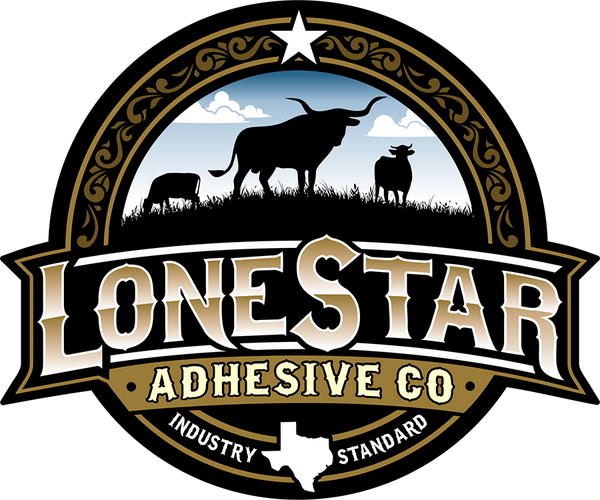3 Reliable Ways to Test the Heat Settings of Your Hat Press
Your deadline is tomorrow, and no matter what you've tried, what was once working is no longer cutting it. Sound familiar?
Getting your heat press' temperature dialed in is essential for consistent, professional results, and if issues arise, will be the focus of the first round of troubleshooting you'll go through with our customer service team. LoneStar Adhesive is, at the basic scientific principle, a polymer based adhesive that relies upon the correct combination of pressure and heat to liquefy and be fused through the materials of your project. Once cooled, it hardens into a permanent bond... but what happens when it just isn't working?
Generally, heat presses can cool at any point of the workflow- they may not be fully warmed at the beginning, may heat cycle to maintain temperatures throughout your job, or are not recovering fast enough between pressed hats. Sometimes, during harsh winters in non-air conditioned shops, you may even need to increase your press time to account for the surrounding air temps cooling your platens. When contacting our customer service for help, these are a few points of information we may inquire about in order to guide you through checking the true temperature of your platens.
One of the tools your shop needs is a reliable way to test the heat settings of your hat press or heat press. Knowing the limitations of each method described below will help you diagnose issues before they begin to affect production, and allow you to prepare according to your volume. Productivity is profitable and we want to get you on to the next job as quickly as possible!
Here are three effective methods for testing the accuracy of your heat platen — with our top recommendation leading the list.
1. Digital Pyrometer with Surface Probe – Most Accurate & Recommended
For precision you can trust, use a digital K-Type pyrometer and surface probe kit. This method provides direct contact readings of your platen’s surface temperature with minimal margin for error. The contacts are placed directly on the platens, and you can even test the heat emissivity of a silicone platen for yourself by placing one contact directly on the heating element, and another on top of the silicone pad. While this will tell you how well the silicone pad may distribute heat, don't forget that you press hats with the upper platen lowered as well. The heat that radiates through the silicone from each side will continue to allow the press to perform as expected. This thermometer type is ideal for high production environments where accuracy is non-negotiable.
We recommend this method above all others — unless you're fully aware of the limitations presented in option #3.
Check out an example kit on Amazon
2. Temperature Test Strips – Budget-Friendly, But Less Precise
Temperature-sensitive paper strips offer a simple and affordable way to gauge platen heat. Just press them under heat, and they’ll darken in response to the temperature reached. While relatively accurate, they only provide a rough estimate — often within 10–15°F. Some carry the limitation of only being able to gauge OVER a certain temperature threshold as well, which may not be helpful if you feel like your press is not heating well enough.
These strips are useful in a pinch, but keep in mind: they’re single-use and notoriously easy to misplace in a busy shop.
Example strips available on Amazon
3. IR Thermometer Gun – Convenient, But Misleading on Aluminum Platens
While infrared thermometers are popular for their ease of use, they’re not reliable for reading the temperature of aluminum platens, curved surfaces or silicone pads. First, it may help to understand how a pyrometer (IR thermometer/laser thermometer) works to understand its specific limitations and how to overcome them if this is the only tool you have available.
Polished aluminum surfaces are more efficient at reflecting infrared radiation from the environment around them than they are at emitting the infrared radiation of their contents. Similarly, silicone dissipates heat in a way that is not conducive to an IR thermometer's read, so if you're aiming directly at a platen, you will not be receiving an accurate read that's useful for calibrating or troubleshooting your heat press. Due to emissivity issues, IR readings can be off by 100–150°F, especially on non-coated (shiny) aluminum surfaces. Some of this deficit can be mitigated by averaging multiple reads from many angles, acknowledging the potential inaccurate read, or purchasing an infrared thermometer which allows you to adjust for emissivity.
That said, IR guns do excel at reading the final temperature of the hat or substrate itself, making them useful for product QC, just not for platen calibration without the adjustments mentioned.
See a commonly used IR model on Amazon
**A meat probe thermometer will not allow for an accurate read. It's function relies upon total submersion, which cannot be achieved even if you close the press. The best information you may glean from using one is that the press, when closed, reaches over 200-210°F which is the temperatures needed to liquefy and activate Durra-Bull, the signature product of LoneStar Adhesive.
Next Step: Calibrate Your Press
Once you’ve confirmed the actual platen temperature, be sure to calibrate your heat press accordingly, if this is possible with your press. Refer to your machine’s manual or consult the manufacturer directly for specific adjustment procedures.
Note: The links above are provided solely for convenience — we are not affiliated with these products and do not guarantee their performance.
